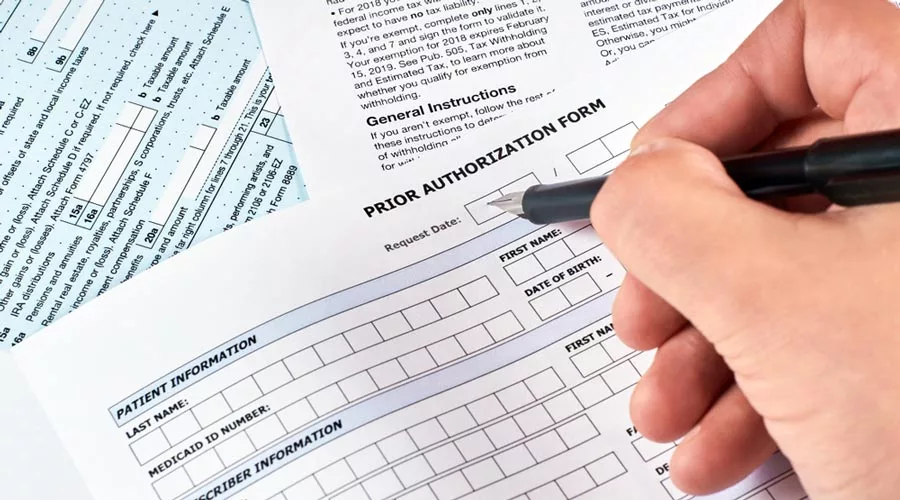A Resource for Rehab Owners on Maximizing Reimbursement
In the realm of addiction treatment, the pursuit of excellence extends beyond compassionate care—workers put everything they have into the recovery of any given client. At the heart of every reputable drug rehab center lies a robust system designed to ensure optimal client care, resource utilization, and adherence to industry standards.
This unique dynamic exists between rehab facilities and, 90% of the time, insurance agencies, and is known as a utilization review for drug rehabs (and other behavioral health facilities). These thorough reviews demonstrate that a facility is leveraging the most for a client in their addiction treatment, and spotlighting the fact that the treatment is necessary, proving to the payer that their money is well-spent.
In this article, we’ll demonstrate what exactly the utilization review process is, how it impacts the leadership at a rehab facility, and how you can use it to your advantage to deal with unsavory insurance agencies.
If you’ve never dealt with the review process, make sure you stick around until the end of the article to prepare yourself in the event one of your clients is chosen for review by the insurance agency.
Understanding Utilization Review: Manifesting Quality Care
Nobody likes dealing with unpaid claims by the insurance agency. Thankfully, the utilization review process is helping to eliminate these issues, acting as a mediator between the insurance agency and treatment facility to bring the best treatment option to clients and ensure a relationship that benefits all parties involved.
Utilization Review (UR) is a meticulous process integral to the effective operation of drug rehab centers, focusing on the assessment and improvement of client care delivery. Far beyond a bureaucratic necessity, a utilization review team, made up of utilization review specialists, steps in to conduct an audit of services rendered, and reports back to the insurance company on their findings.
In reality, a utilization review has become a dynamic tool that contributes to the continual enhancement of treatment protocols, fair reimbursement, patient outcomes, and the overall effectiveness of addiction treatment centers.
What Is the Role of a Utilization Review Employee?

The utilization review worker spends an ample amount of time discussing their findings with a rep from the insurance agency. Conversation material includes the specific situation of the client. This is done from a platform of acting as an advocate for the client – lobbying for continued treatment and coverage from insurance agencies.
In addition, the utilization review worker will work together with the facility to gain insight into the position of the client to better understand what’s needed to achieve the most optimal result – a full recovery.
Utilization Review Specialists and HIPPA
Because utilization review managers work closely with the insurance company to relay information back from the treatment center, their role regarding HIPPA becomes extremely important.
Utilization review managers must be well-versed in the HIPPA regulations, as they’re trusted with sensitive information contained within a client’s personalized treatment plan.
The Purpose of Utilization Review
A utilization review team was originally deployed by the government, to ensure that effective treatment was being provided for recipients of Medicaid and Medicare. Since then the practice has expanded considerably and is often a full-time staff position for larger facilities and those with multiple locations across states.
It is worth noting that a pre-emptive utilization review can be done during client care. This example is known as concurrent reviews or concurrent UR. In addition, it’s also available after the care has been completed. This takes place during an interview after a client finalizes the treatment process.
You’re probably somewhat familiar with the Utilization Review process – but know it by another name. When the process is conducted prospectively, it’s considered part of the prior authorization process. This is when insurance agencies require a report and full utilization reviews before they pay for services at treatment centers.
So, what are the primary goals involved with utilization reviews?
Improve Provider Compensation

It’s not uncommon to hear of rejected claims and denial of payment for clients who have undergone treatment at a substance abuse facility. Because the insurance agency doesn’t believe certain services were necessary or relevant to client recovery – they have been able to legally deny these claims, leaving many treatment centers holding the bag, uncompensated for their treatment efforts.
Utilization reviews act as a way to mitigate these challenges, delivering vital information to insurance agencies that give them peace of mind regarding a client’s treatment plan.
This doesn’t only take place in the substance abuse treatment space. It’s a common occurrence, especially in the world of prescription drug treatment. Many insurance agencies have made it common practice to deny clients certain medications, claiming that the prescription isn’t an integral part of healing or treatment.
These situations are usually mitigated with a quick letter from the physician, known as a “Prior authorization form.” After receiving the form, the insurance agency will usually contact the pharmacy and assure them of incoming payment for the prescription medication.
There are additional areas where utilization reviews have become vital components in the addiction treatment industry.
Optimization of Resource Allocation
Utilization Review plays a pivotal role in ensuring that resources, whether they be staff, facilities, or therapeutic interventions, are allocated optimally. By assessing the appropriateness and necessity of each component of care, drug rehab centers can streamline operations and maximize the impact of available resources.
Enhancing Treatment Plans
Tailoring addiction treatment plans to the unique needs of each client is central to successful rehabilitation. Utilization Review scrutinizes treatment plans, identifying areas for refinement and adjustment.
This process ensures that interventions align with evidence-based practices, fostering a patient-centric approach that maximizes the likelihood of sustained recovery.
Regulatory Compliance for Rehab Ownership
We all know the importance of regulatory compliance in the substance abuse treatment field. In the context of these reviews, regulatory boards also need reassurance that clients receive medical necessity when required. At the end of the day, it’s all about obtaining the very best outcomes concerning the client.
In an environment where regulatory compliance is paramount, Utilization Review acts as a safeguard. By regularly assessing and aligning treatment practices with industry standards and regulations, drug rehab centers not only ensure legal compliance but also guarantee that the care provided is of the highest quality.
Striving for Continuous Improvement

Utilization review is a catalyst for continuous improvement. As the leader of a substance abuse treatment facility, you want to make progress and not lose ground in the quality of your services. This takes a regular focus and a strong will to constantly improve the client experience.
Regular evaluations of clinical processes, patient outcomes, and feedback mechanisms allow drug rehab centers to adapt and evolve, staying at the forefront of advancements in addiction treatment and recovery support.
Through direct contact and interviews with clients conducted by third-party entities like utilization teams, a continued effort for positive change and keeping current with practices in addiction medicine is kept in place, year after year.
Demonstrating Excellence In Addiction Recovery
As we navigate the landscape of drug rehabilitation, the utilization review process emerges as a guiding force, steering treatment centers toward excellence. Beyond the paperwork and assessments, UR is a commitment to the well-being of individuals seeking recovery – a promise to provide the highest standard of care.
If anything, utilization is an excellent tool in the fight for substance abuse recovery facilities to receive prompt and timely payments from insurance agencies, in addition to demonstrating the quality of care you provide. This is assuming – the utilization review ends on a positive note.
Fortunately, certain agencies exist that can help you prepare for utilization reviews, ensuring that these reviewers send a favorable review back to the insurance agency.
Ads Up Marketing and the Utilization Review Process
The utilization review process can be stressful – especially with so much riding on the outcome and the report provided by the review teams. However, by flipping these in a positive light, we can help you leverage these reviews and use them in your favor to help you stand up to the difficulties in dealing with insurance agencies.
We can work closely with you to ensure the client care plan is efficiently communicated, helping you get the compensation you need for services rendered.
Let’s face it – insurance agencies aren’t always the easiest to deal with. Correctly approaching a utilization review team can help you benefit from this process instead of viewing it as a hassle. For more information on how we can assist you in preparing and leveraging the power of a utilization review, contact us and let’s set up a complimentary consult today!
Free Digital Marketing Analysis




